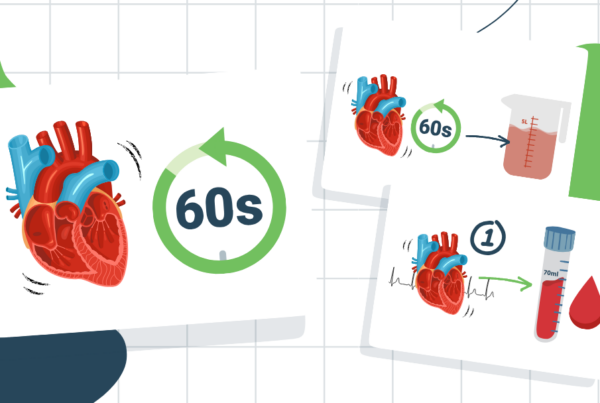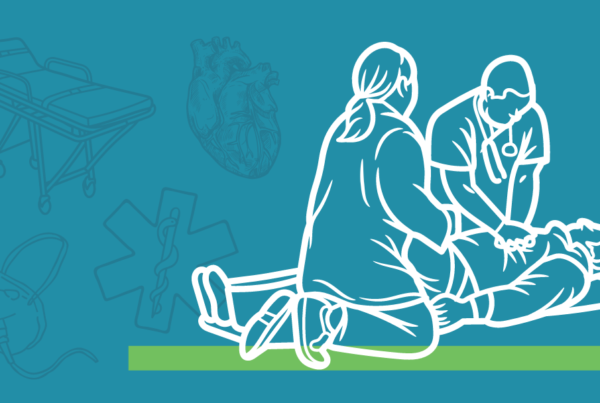 Call these lies, mantras, myths or misinformation, these pieces of EMS lore have been perpetuated in classrooms forever. It never hurts to occasionally clean out the closet so we thought we’d take a moment to share old—and even a few new—lies learned in EMT class.
Call these lies, mantras, myths or misinformation, these pieces of EMS lore have been perpetuated in classrooms forever. It never hurts to occasionally clean out the closet so we thought we’d take a moment to share old—and even a few new—lies learned in EMT class.
1. Oxygen is the wonder drug
The AHA pretty quickly doused that fire for us. We may still use oxygen in some patients but the days of slamming everyone with 15 liters is gone. It makes me wonder when we stopped thinking of oxygen as a drug and started giving it out like candy. Maybe we never started. The current thinking on oxygenation is to give it when it is needed—and titrate it to adequate saturation levels. It also seems we have forgotten about just how much oxygen a nasal cannula can provide.
2. You can easily tell the difference between breathing patterns (biots, apneustic, cheyne-stokes)
We are taught all of these breathing patterns and that is probably ok. But expecting someone to recognize them—or spend the time to recognize them—in head injury is somewhat unrealistic. Face it, if you have a patient whose mental status is tanking, the BP is going through the roof and the pulse is dropping, does it really matter which brand of funky respirations they have? There is some good that can come from respirations, though. Elevated respirations are an early sign of shock and rapid, deep respirations (Kussmaul) often indicate a metabolic issue (think ketoacidosis, aspirin overdose).
3. Tracheal deviation is a reliable sign of tension pneumothorax
The part of the trachea that is palpable over the surpasternal notch is very proximal. For the trachea to deviate that much, the amount of pressure in the thoracic cavity is pretty extreme—and the patient is very critical. It is a late sign. You’ll likely see a lot of other signs and symptoms first.
4. EMS providers don’t diagnose
If this is true, then how do we know when to use the epinephrine auto-injector? For systems that are allowed to, how do we know when to give a neb treatment, CPAP or naloxone? We may not have all the diagnostic capabilities of a hospital (labs, radiology) but as our toolbox grows we must be confident in the condition we are treating. Call it “field diagnosis” or “presumptive diagnosis” if you must. But it is diagnosis.
5. A radial pulse equals a BP of 80 systolic
This came from ATLS and was meant as a method of rough approximation. EMS took it and carved it into stone as fact. What is the real message? If there is a radial pulse, it is better than if there isn’t. No radial pulse (or a very weak radial pulse) with a carotid pulse—especially with other ominous symptoms—is bad for your patient. That is the real message.
6. All patients with a given condition present the same
Oh how we memorized those lists of signs and symptoms in the book. In our mind, our patient would look just like that—and the signs and symptoms would appear in just that order. Our first few real calls changed that pretty quickly.
7. You can hear muffled heart sounds in a moving ambulance
We are lucky to hear a blood pressure in the ambulance—and our stethoscope is right over the artery. Beck’s Triad (cardiac tamponade) isn’t found in every patient (some sources say only about half)—and muffled heart sounds certainly can’t be heard in a moving ambulance.
8. “A little” altered mental status isn’t a big deal
This is a good saying—if it isn’t YOUR altered mental status. The brain is particularly intolerant to reduced glucose and oxygen. When these items are in short supply, the mental status changes. Don’t forget stroke and sepsis where altered mental status is often a presenting sign. Any altered mental status is significant.
9. You must only suction for 15 seconds
This is a great rule when your patient vomits a little. Not so much when they are spewing out liquid like the big fountain in park. Where did 15 seconds come from? I’m guessing the ICU where there were intubated patients. You could suction, ventilate and suction again. BVMing a couple of potatoes and a pint of beer into the lungs is MORE fatal than an extra ten seconds of hypoxia to suction properly.
10. You perform your patient history using SAMPLE
Assessment is a thinking process. Using rote mnemonics isn’t part of a thinking process. Mnemonics are designed to help you remember things when you forget. They are not designed to be the main tool for assessment. You begin a history with your patient, you create a dialogue—a flow—you assess body systems strategically. At the end, when you sit back you think, “Did I forget anything?” This is when SAMPLE (or any mnemonic) fits in.
This one just in… Now number 11:
11. Everyone with trauma needs a backboard
This is our latest addition to the list. Everyone used to get a backboard as a “precaution.” Sadly, that precaution is profoundly uncomfortable and can even cause harm. While not yet rolled out in all protocols, the new trend is to do a solid spinal assessment and use the backboard less. Much less.



Amen! Ive been preaching these for quite some time now!
Thanks Scott! Feel free to share
Finally! Treating the patient and not following the “recipe” verbatim. It’s nice to see someone recognize the fact that EMTs have brains!
Thanks Jim! We believe critical thinking (versus “recipe”) in the EMS profession is essential! A yes- EMTs DO have brains 🙂
How about this one? “Glove up for every call”. Really? Nothing replaces the comfort of the human touch. Gloves put a cold barrier between you and your patient. Unless they are bleeding or spewing out some other bodily fluid is it really necessary? A warm handhold on the way to the hospital can do wonders for your patient.
I agree Richard. Perhaps that shows our age…er, uh, seniority. On top of the personal component, my other issue is that standard precautions are a decision that should be made–not something done as a rote process. If we use gloves as our BSI, we forget to protect or face when we suddenly have to suction.
Good one!
-_- If your not gloved up, and the situation where gloves are necessary arises, and you have to waste time putting on your gloves when they could already be on. Is that not simple enough for you? There is no science supporting your statement regarding bare hands.
It has nothing to do with “science”. Looks like you just like arguing for the sake of arguing. The 10 seconds it takes to don gloves isn’t going to affect anything one way or the other. What he said has merit…deal with it.
I’m not sure I’m touching any of my pts without ppe. If we’re talking science for why then look at the infection rates in the USA. Even if we all washed our hands every single time after pt contact, we all put our hands on everything before we get to the hospital! Including our phones and face. People aren’t always clean, even is we think they are. Hygiene plays a huge role with pt care and though it seems nice to have a “warm touch,” I’m not accidentally getting C diff because of it.
Aaaaah, common sense! Finally. You can tell an EMS instructor knows their stuff when they come up with comments like these ten. Er, eleven.
Thanks, Daniel. It’s important to get the word out there. It is amazing how many are still teaching old mantra.
Spinal did sneak in there at the end. A worthy “bonus” #11. I’ll bet there will be twelve and thirteen before too long!
Regarding #6:
My EMT instructor constantly beat into our heads regarding patient presentation, “The patient did NOT read the textbook!” He also reinforced the mantra “Treat the patient, not the numbers.” (the BLS equivalent to “treat the patient, not the monitor”)I once had to tell a rookie, “A patient that is pink, breathing easy, and able to speak in full paragraphs does NOT have an SpO2 of 72% no matter what the pulse ox says. If it were really 72%, you would NOT need the monitor to tell you that something was VERY wrong.”
Sometimes we get ordered to do something that is not appropriate. I cleared c-spine and determined that there were no assessment indications for full spinal immobilization. I observed the mechanism of injury as it happened. I was still ordered to fully immobilize the patient. Upon arrival at the hospital the first thing done was to remove the head-blocks, the c-collar, and the backboard. Fifteen minutes after the physician evaluated the patient, without any xrays, the patient walked out of the ER. Do ER nurses and physicians not know that we can clear c-spine based upon the protocols?
Some don’t. It is more common than you think.
When the AHA guidelines changed on oxygen and we started using the 94% guideline for oxygen delivery there were nurses who would yell at us for not giving oxygen.
There are always a few. Fortunately not everyone and the word eventually does get out.
My #12: Treat the patient, not the numbers. And when it comes to decision making, things aren’t always black and white. There are a lot more than fifty shades of grey…
Oh, Ted…
Just how many more?
Thankfully, I had an instructor who dispelled these myths and taught my class to think critically. He kept us up to date on research and constantly drilled it into our heads to treat the patient, not the monitor.
Hannah–congratulations. I hope you tell your instructor that some day.
We need more like that for sure!
Bullshit. You must have gone to a shitty Emt school then. You should have learned none of these or if some of them learned, then learned them with exceptions.